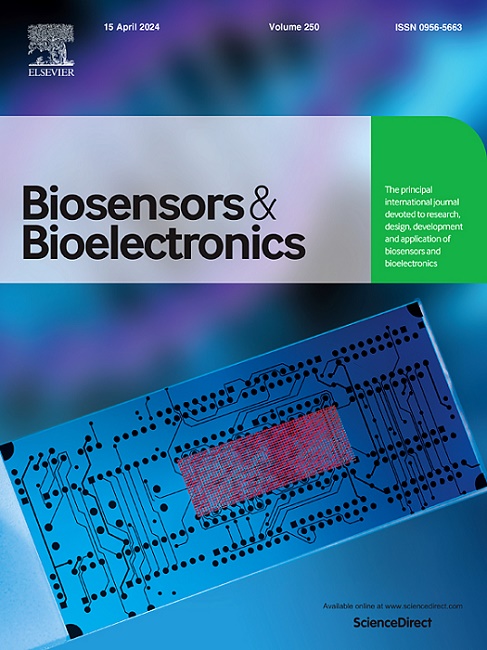Dual-mode, regenerated DNA motor for simultaneous detection of viral gene fragments and diagnosis of infectious disease
IF 10.7
1区 生物学
Q1 BIOPHYSICS
引用次数: 0
Abstract
This study presents a dual-mode and regenerated DNA motor powered by exonuclease III (Exo III) for the simultaneous detection of viral gene fragments. The detection methodology is categorized into two distinct operational modes. The first mode emphasizes the simultaneous detection of two viral gene fragments from a specific virus. The presence of both genes triggers the operation of the DNA motor, generating a singular signal output. This mode operates on an “AND” logical mechanism, which enhances the precision of positive case identification. The second mode facilitates the simultaneous detection of three viral gene fragments from three different viruses within a single assay. The presence of these genes activates their respective motors, yielding distinct signal outputs. This mode supports the multiplex detection of three target genes, thereby aiding in the identification of previously uncharacterized viruses infecting patients and alleviating the logistical and financial burdens associated with multiple testing procedures. The detection limit in the “AND” logical mode is at the aM level, while in the multiplex mode, it reaches the fM level, facilitating the sensitive detection of viral gene fragments. The DNA motor can be regenerated by separating and reconstituting the utilized orbits, enabling its reuse for up to seven cycles in the “AND” logical mode and five cycles in the multiplex mode. Accurate diagnoses were achieved for patients exhibiting upper respiratory symptoms. Therefore, the proposed motor offers a novel and regenerative approach for viral gene fragments detection, demonstrating significant promise for application in the clinical diagnosis of viral infectious diseases.
求助全文
约1分钟内获得全文
求助全文
来源期刊

Biosensors and Bioelectronics
工程技术-电化学
CiteScore
20.80
自引率
7.10%
发文量
1006
审稿时长
29 days
期刊介绍:
Biosensors & Bioelectronics, along with its open access companion journal Biosensors & Bioelectronics: X, is the leading international publication in the field of biosensors and bioelectronics. It covers research, design, development, and application of biosensors, which are analytical devices incorporating biological materials with physicochemical transducers. These devices, including sensors, DNA chips, electronic noses, and lab-on-a-chip, produce digital signals proportional to specific analytes. Examples include immunosensors and enzyme-based biosensors, applied in various fields such as medicine, environmental monitoring, and food industry. The journal also focuses on molecular and supramolecular structures for enhancing device performance.
 求助内容:
求助内容: 应助结果提醒方式:
应助结果提醒方式:


